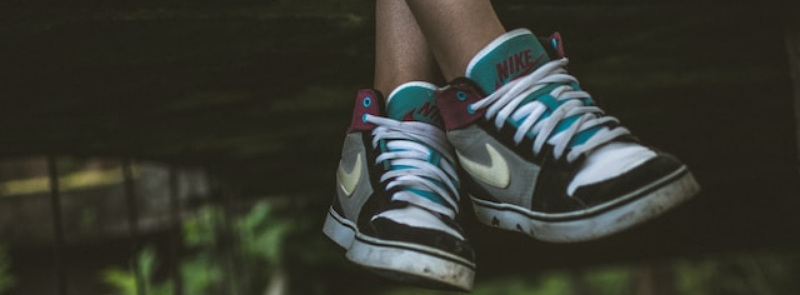
When It Occurs
Every September 23rd
Official Website
Timeline
Days Passed (751)
# Hashtags
#RestlessLegsAwarenessDay #RestlessLegsSyndrome
September 23rd marks Restless Legs Awareness Day, dedicated to raising awareness and educating people about a medical condition that affects both adults and children. This observance aims to shed light on Restless Legs Syndrome, highlighting its impact and the need for understanding and support.
History of Restless Legs Awareness Day
- Establishment: Restless Legs Awareness Day was established by the Restless Legs Syndrome Foundation (RLS Foundation), a nonprofit organization dedicated to improving the lives of those with RLS through education, advocacy, and research.
- Purpose: The day coincides with the birthday of Dr. Karl-Axel Ekbom, the Swedish neurologist who first described the condition in the 1940s. It aims to increase public awareness, encourage people to seek diagnosis and treatment, and support ongoing research into the causes and treatments of RLS.
Significance of Restless Legs Awareness Day
- Awareness and Education: The day helps to educate the public about the symptoms, causes, and treatments of RLS, which is often misunderstood or misdiagnosed.
- Support for Patients: It provides support and resources for those living with RLS, helping them manage their condition and improve their quality of life.
- Research and Advocacy: The day promotes research into the causes and treatments of RLS and advocates for greater recognition of the condition within the medical community and society at large.
How to Celebrate Restless Legs Awareness Day
-
Educational Activities:
- Webinars and Seminars: Attend or organize webinars and seminars that provide information about RLS, including its symptoms, diagnosis, and treatment options. These events can feature experts in the field, including neurologists and sleep specialists.
- Workshops: Participate in workshops that offer practical advice on managing RLS symptoms, such as lifestyle changes, dietary adjustments, and exercise routines.
-
Community Outreach:
- Support Groups: Join or create support groups for individuals with RLS and their families. These groups provide a safe space to share experiences, offer support, and discuss coping strategies.
- Public Talks: Organize public talks and informational sessions in community centers, libraries, or healthcare facilities to spread awareness about RLS.
-
Fundraising and Advocacy:
- Fundraising Events: Host fundraising events such as walks, runs, bake sales, or online campaigns to raise money for RLS research and support services.
- Advocacy Campaigns: Advocate for greater recognition of RLS by contacting local representatives, participating in advocacy campaigns, and sharing information on social media.
-
Social Media Engagement:
- Share Stories: Use social media platforms to share personal stories and experiences with RLS. Highlight the challenges and triumphs of living with the condition.
- Educational Posts: Post educational content about RLS, including facts, symptoms, treatment options, and resources. Use hashtags like #RLSAwarenessDay and #RestlessLegsSyndrome to reach a wider audience.
-
Learning and Sharing:
- Read Research: Read up on the latest research and developments in the field of RLS. Share this information with others to increase awareness and understanding.
- Distribute Materials: Distribute informational brochures, pamphlets, and flyers in your community to educate others about RLS.
Understanding Restless Legs Syndrome (RLS)
-
Symptoms:
- Urge to Move: An uncontrollable urge to move the legs, often accompanied by uncomfortable sensations such as itching, tingling, or burning.
- Relief with Movement: Symptoms typically improve with movement, such as walking or stretching, but may return when at rest.
- Worsening at Night: Symptoms often worsen in the evening or during the night, interfering with sleep and leading to daytime fatigue.
-
Causes:
- Genetics: RLS can run in families, suggesting a genetic component.
- Neurological Factors: Abnormalities in the brain’s dopamine pathways, which are involved in controlling muscle movements, may contribute to RLS.
- Associated Conditions: RLS can be associated with other conditions such as iron deficiency, kidney disease, diabetes, and pregnancy.
-
Diagnosis:
- Medical History and Symptoms: Diagnosis is primarily based on a patient’s medical history and description of symptoms.
- Physical Examination: A thorough physical examination to rule out other conditions that may cause similar symptoms.
- Blood Tests: Blood tests may be conducted to check for underlying conditions, such as iron deficiency or kidney issues.
-
Treatment:
- Medications: Various medications can help manage RLS symptoms, including dopaminergic agents, anticonvulsants, and opioids.
- Lifestyle Changes: Regular exercise, maintaining a consistent sleep schedule, and avoiding caffeine and alcohol can help reduce symptoms.
- Iron Supplements: For those with low iron levels, iron supplements may alleviate symptoms.
Inspirational Quotes for Awareness
- “Awareness is the first step in healing.” – Dean Ornish
- “The greatest wealth is health.” – Virgil
- “The more you understand, the less you suffer.” – Dalai Lama
Conclusion
Restless Legs Awareness Day is a crucial observance dedicated to raising awareness about Restless Legs Syndrome, supporting those affected, and promoting research into this often misunderstood condition. By participating in educational activities, community outreach, fundraising, and advocacy efforts, individuals can help increase understanding and improve the lives of those living with RLS. Celebrate this day by learning more about RLS, sharing information, and supporting ongoing efforts to find effective treatments and improve the quality of life for those affected.


